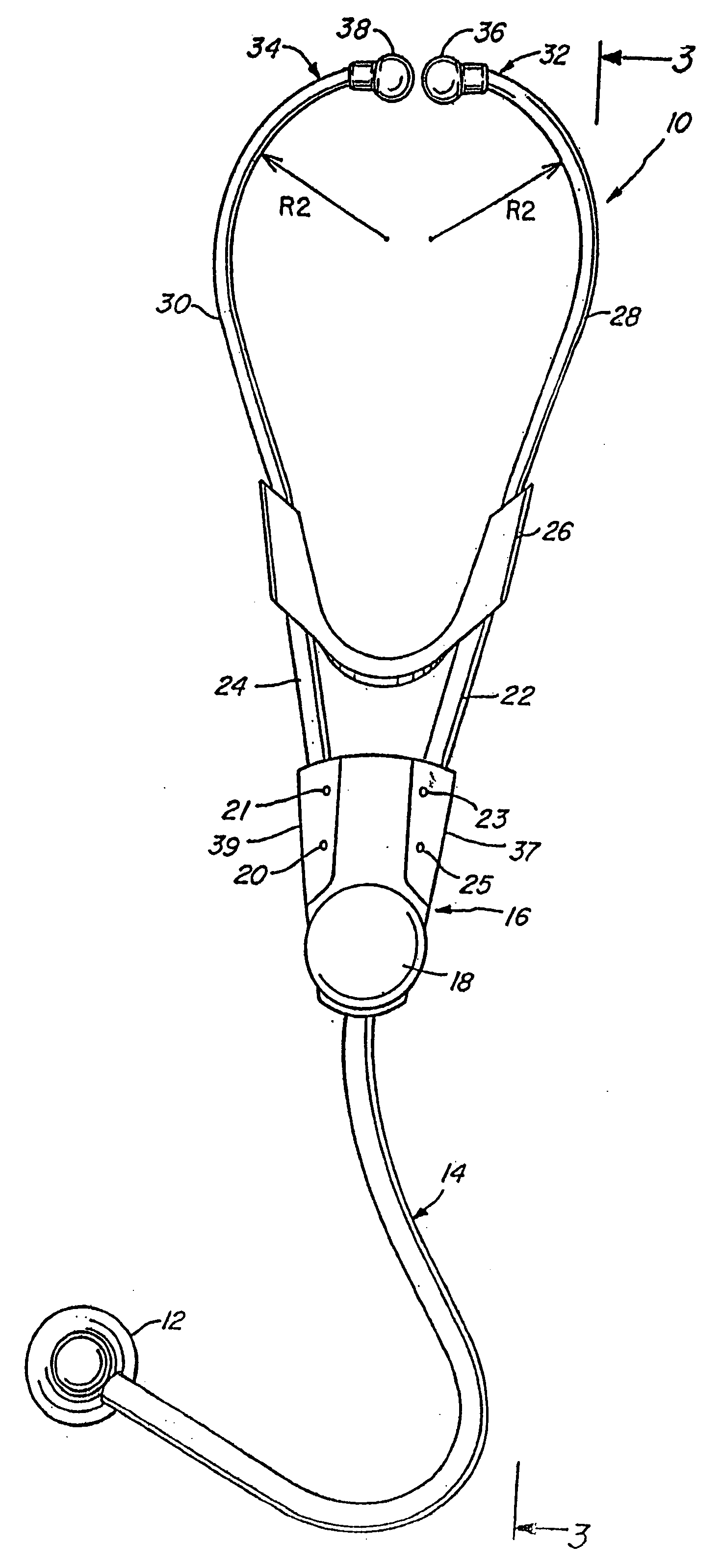Electronic stethoscope
a technology of stethoscope and stethoscope body, which is applied in the field of stethoscope, can solve the problems of not being widely used by medical personnel, consuming too much power, weighing too much, etc., and achieves the effect of improving performance characteristics
- Summary
- Abstract
- Description
- Claims
- Application Information
AI Technical Summary
Benefits of technology
Problems solved by technology
Method used
Image
Examples
Embodiment Construction
[0038] For purposes of illustration only, and not to limit generality, the present invention will now be explained with reference to an electronic stethoscope for use in heart and lung diagnosis in humans. Specific ranges of operation and frequencies will be discussed in this context. One skilled in the art will appreciate, however, that the present invention is not so limited and that by changing the operational frequencies and other stethoscope parameters, the present invention may be used to diagnose other types of human biological activity as well as biological activity in infants, children, animals, and so on.
[0039] Reference is now made to FIGS. 1, 2, and 3 which Figures illustrate the overall configuration of the electronic stethoscope of the invention. The electronic stethoscope 10 includes a chestpiece 12 that is used to detect and convert biological activity of particular organs into acoustic pressure waves (i.e., acoustic signals). The acoustic signals are transmitted th...
PUM
 Login to View More
Login to View More Abstract
Description
Claims
Application Information
 Login to View More
Login to View More - R&D
- Intellectual Property
- Life Sciences
- Materials
- Tech Scout
- Unparalleled Data Quality
- Higher Quality Content
- 60% Fewer Hallucinations
Browse by: Latest US Patents, China's latest patents, Technical Efficacy Thesaurus, Application Domain, Technology Topic, Popular Technical Reports.
© 2025 PatSnap. All rights reserved.Legal|Privacy policy|Modern Slavery Act Transparency Statement|Sitemap|About US| Contact US: help@patsnap.com



